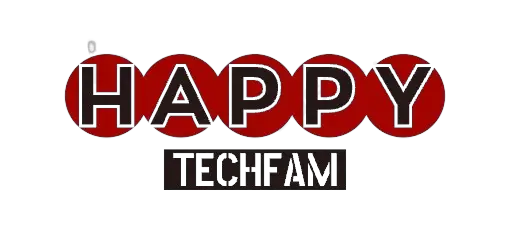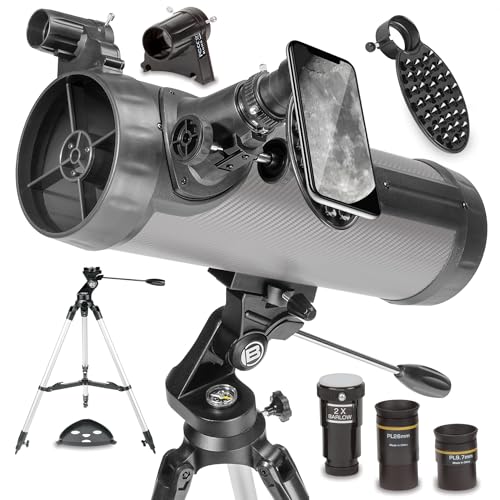Unlocking the cosmos with the Orion Observer 134mm Equatorial Reflector Telescope has been an incredible journey, and I’m eager to share my extensive experience.
For years, I’ve dreamt of exploring the night sky beyond what my naked eye could offer. The vastness of space, the mystery of celestial objects, always captivated me. I knew a telescope would be a transformative purchase, bringing those distant wonders closer. But the prospect of choosing the right one felt daunting. A subpar telescope would not only fail to deliver on its promise but could also discourage me entirely. A high-quality instrument, however, could ignite a lifelong passion.
- This wonderfully capable equatorial reflector telescope gives serious beginning and intermediate stargazers an exciting look at the many wonders of the night sky
- Its 134mm (5.3") parabolic mirror and 650mm focal length provide sharp, wide-field views of the lunar surface, Saturn's rings, and deep-sky all-stars like the Lagoon and Orion nebulas and the...
- The sturdy EQ3-class equatorial mount and aluminum tripod provide solid support and allow slow-motion manual tracking of celestial objects as they move across the night sky
Navigating the World of Telescopes: What to Consider
Stepping into the world of telescopes, especially as a beginner, can seem overwhelming. There’s a huge variety of options—refractors, reflectors, Dobsonian, and equatorial mounts—each with its own set of pros and cons. The ideal telescope depends heavily on your experience level, your budget, and the type of celestial objects you want to observe. Beginners often struggle with choosing between the simpler Dobsonian telescopes and the more complex equatorial mounts. If you’re new to astronomy, a simple Dobsonian might be less intimidating; however, for those wanting to track objects precisely, an equatorial mount like the one featured in the Orion Observer 134mm offers superior tracking capabilities. Before buying any telescope, consider factors like aperture size (larger is generally better for light gathering), focal length (influencing magnification and field of view), portability, and the included accessories.
- 150mm Large Aperture: Capture bright, clear, and detailed views of the night sky with a 150mm aperture and 650mm focal length. Its powerful light-gathering ability delivers sharp images—perfect for...
- PERFECT ENTRY-LEVEL TELESCOPE: The Celestron PowerSeeker 127EQ is an easy-to-use and powerful telescope. This 127mm Newtonian Reflector offers enough light gathering ability to see planets, the Moon's...
- LARGE APERTURE: This Newtonian telescope has a 114mm aperture for exploring the Moon, planets and deep sky objects.
Introducing the Orion Observer 134mm: A Detailed Look
The Orion Observer 134mm Equatorial Reflector Telescope promises a sharp, detailed view of celestial objects suitable for both beginners and intermediate astronomers. It features a 134mm (5.3″) parabolic mirror and a 650mm focal length, promising wide-field views of the moon, planets, and deep-sky objects. It’s a solid upgrade from Orion’s previous entry-level models, boasting improved stability and easier setup. The sturdy EQ3-class equatorial mount and aluminum tripod provide excellent support. It comes with two 1.25″ Plossl eyepieces (25mm and 10mm), allowing for varied magnification, and a 6×30 finder scope to aid in locating objects. Its portability is another major selling point, with the optical tube easily detachable from the mount.
- Pros: Excellent image quality, sturdy build, portable design, relatively easy setup, good value for money.
- Cons: The finder scope could be improved, some assembly may be required, wind can affect stability, instructions could be more detailed.
Exploring the Features and Benefits of the Orion Observer 134mm
Optical Performance
The heart of any telescope is its optics, and the Orion Observer 134mm does not disappoint. The 134mm aperture allows for impressive light-gathering capabilities, revealing fine details on the moon and planets. I’ve been able to clearly see Jupiter’s stripes, four of its moons, and Saturn’s rings. The clarity is outstanding, making even distant nebulae visible. The included Plossl eyepieces are of good quality, providing a sharp, wide-field view. I’ve supplemented these with additional eyepieces for even greater versatility in magnification. For observing planets, a higher magnification eyepiece (like a 6mm) is very helpful, as are Barlow lenses, which effectively double magnification.
Equatorial Mount and Tracking
The equatorial mount is a key feature. While it requires some initial setup and familiarization, the precise tracking mechanism compensates for the Earth’s rotation. This means you can keep celestial objects centered in your field of view for extended periods without constant adjustments. The aluminum tripod is lightweight yet stable. While some wind does still affect it, particularly if the telescope is extended completely, overall stability is better than what might be expected in a telescope of this price range. I often find myself leaving it set up for long periods, ready for a quick observing session.
Portability and Ease of Use
A significant advantage of the Orion Observer 134mm is its portability. The ability to detach the optical tube from the mount greatly simplifies transportation and storage. The entire setup is manageable for one person, and setting it up only takes a few minutes once you’ve become familiar with the procedure.
Finder Scope and Alignment
While the optics are superb, the finder scope is its weak point. Its quality is lower than the main telescope’s optics, and it is not very intuitive. I found precise alignment challenging at first. Many users have suggested replacing it with a better model or using a laser pointer for easier alignment. This is certainly a worthwhile upgrade if you are looking for ease of use.
Included Accessories and Upgrades
The Orion Observer 134mm comes with a good selection of accessories, but adding others significantly enhances the viewing experience. A Barlow lens, additional eyepieces of varying focal lengths, and a quality camera adapter (if you plan on astrophotography) are all valuable additions. A red light flashlight is crucial for preserving your night vision. Collimation may be required periodically for optimal image quality; hence, a collimation tool is a worthwhile investment.
User Experiences: A Chorus of Approval
Online reviews of the Orion Observer 134mm are overwhelmingly positive. Many users praise the telescope’s value for the price, pointing to the sharp images and robust build. While a few users mention initial setup difficulties, most have reported that it is straightforward once the process is understood. The common sentiment points toward an excellent beginner-to-intermediate telescope, ideal for learning about and exploring the wonders of the cosmos.
Final Verdict: Reaching for the Stars
The Orion Observer 134mm Equatorial Reflector Telescope has fulfilled my long-held desire to explore the universe. Its clear optics, stable mount, and portability have made stargazing a regular and rewarding activity. While some minor drawbacks exist, particularly with the finder scope, the telescope’s strengths far outweigh its weaknesses, especially considering its price point. If you’re looking to enter the world of amateur astronomy, or upgrade from a less capable instrument, this telescope is a powerful tool to explore the heavens. Click here to check out the Orion Observer 134mm and begin your own celestial adventure!
Last update on 2025-11-05 / Affiliate links / Images from Amazon Product Advertising API




